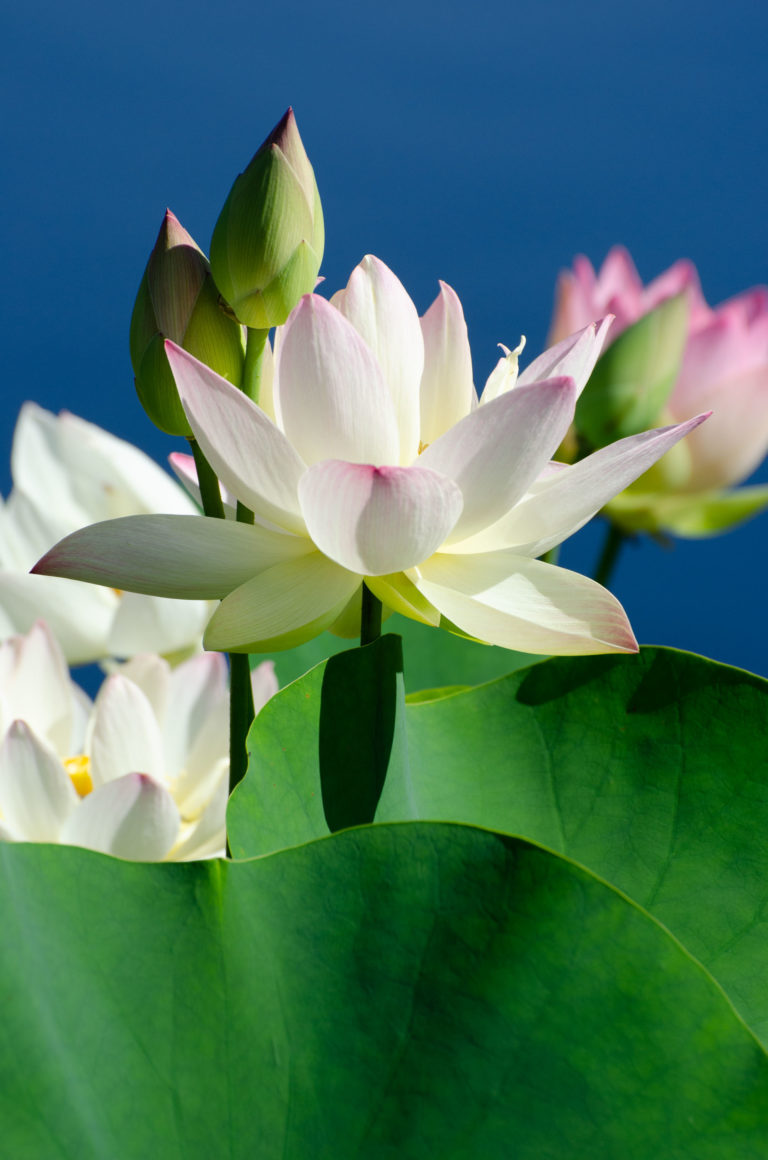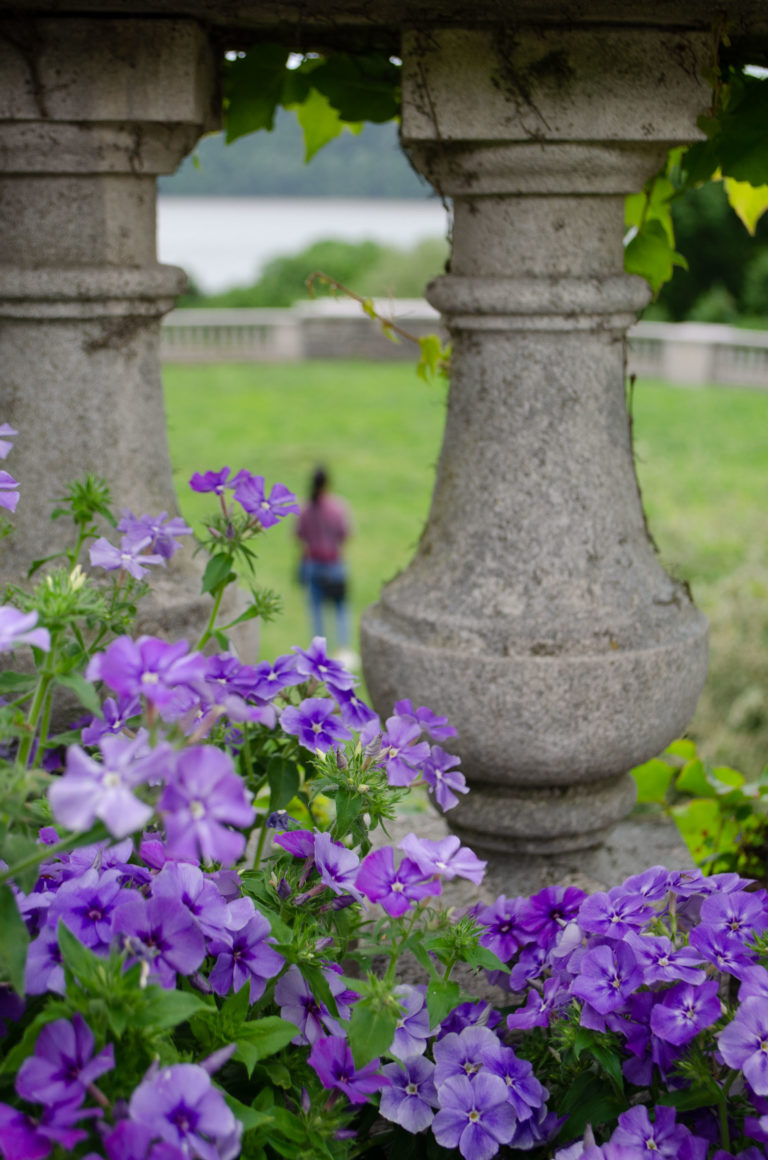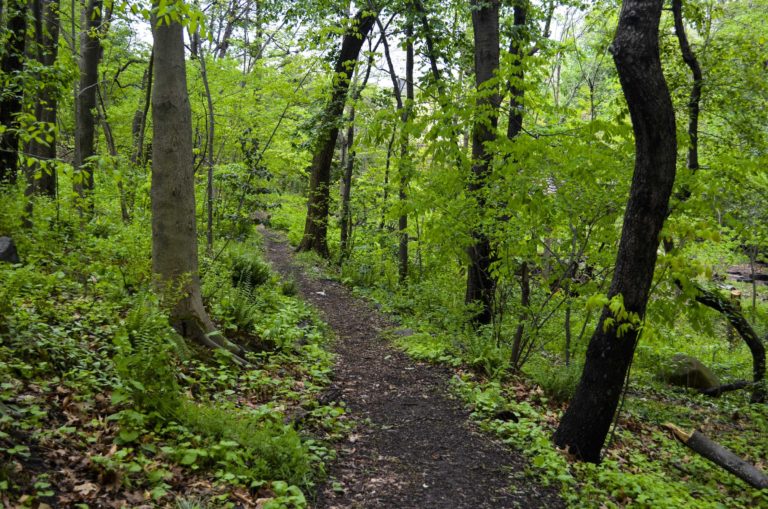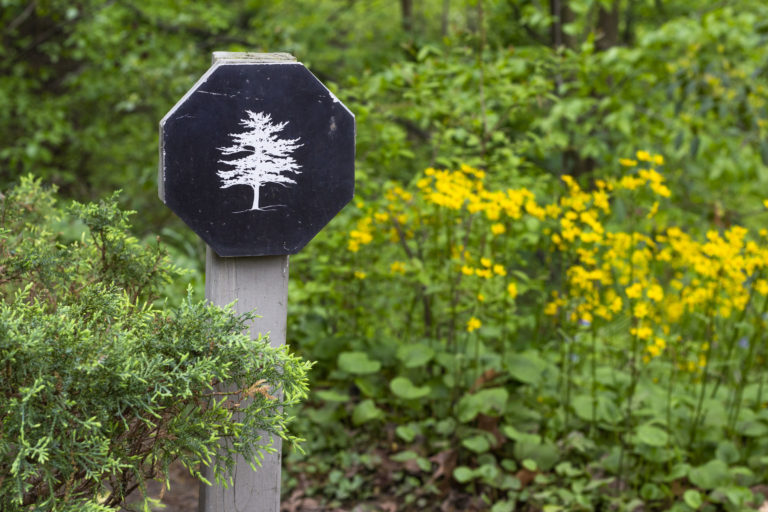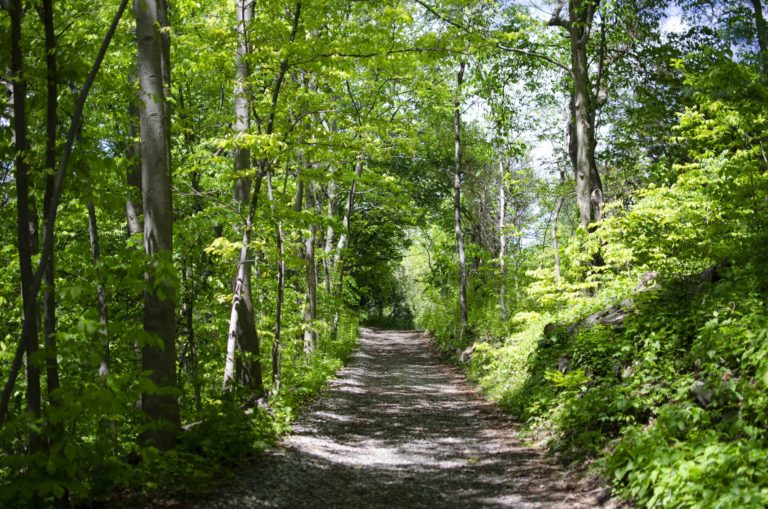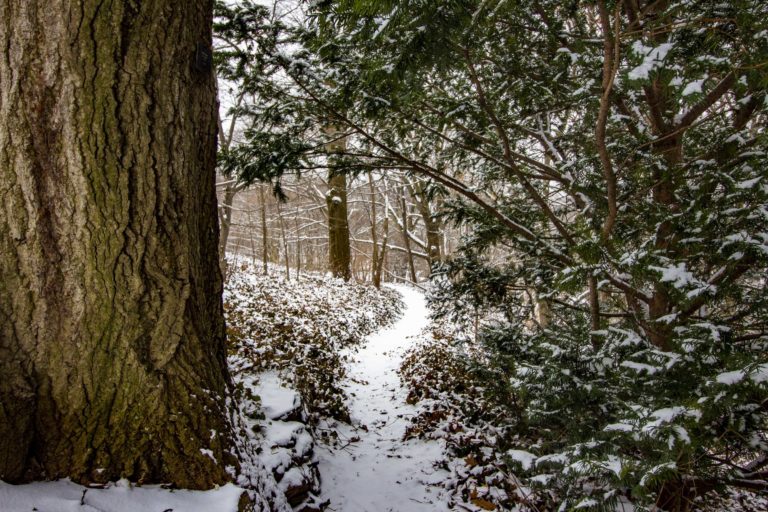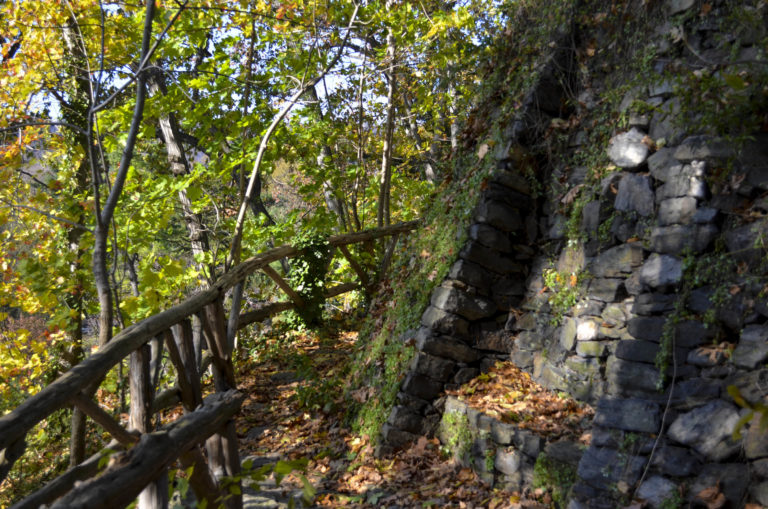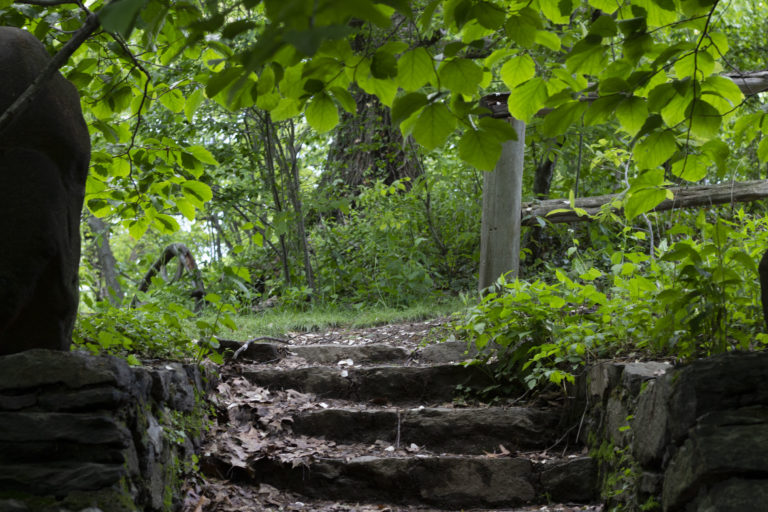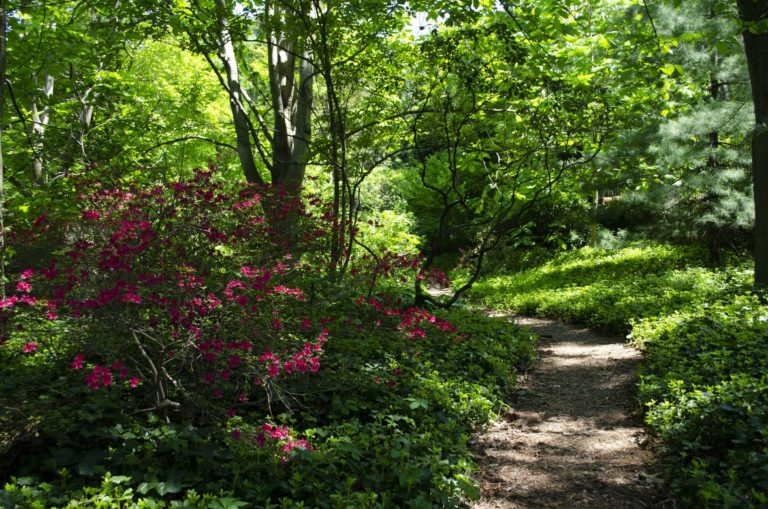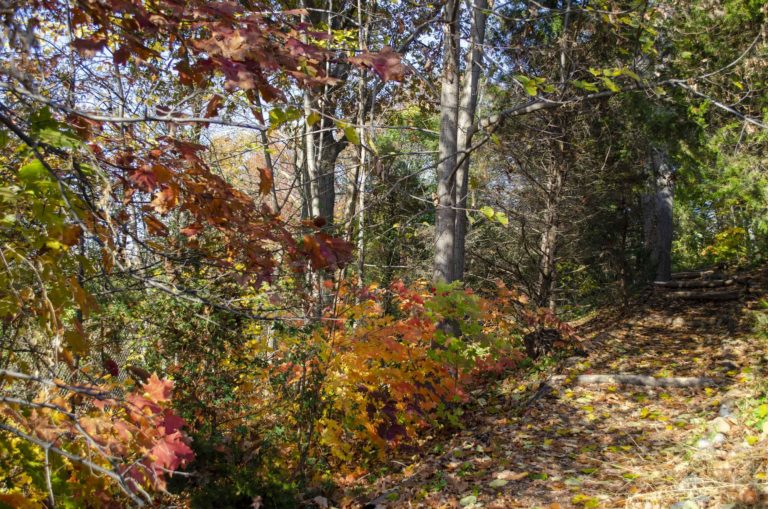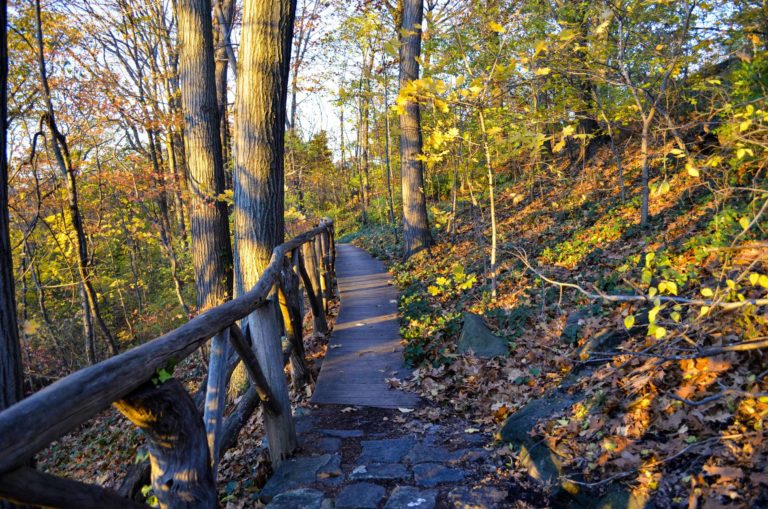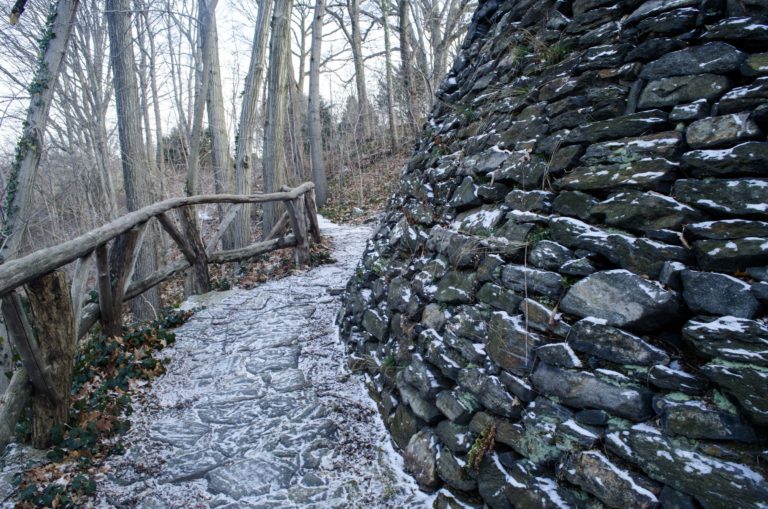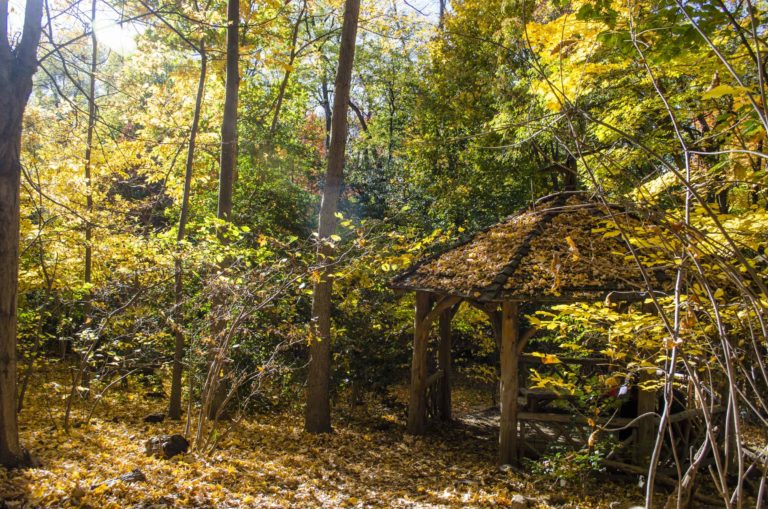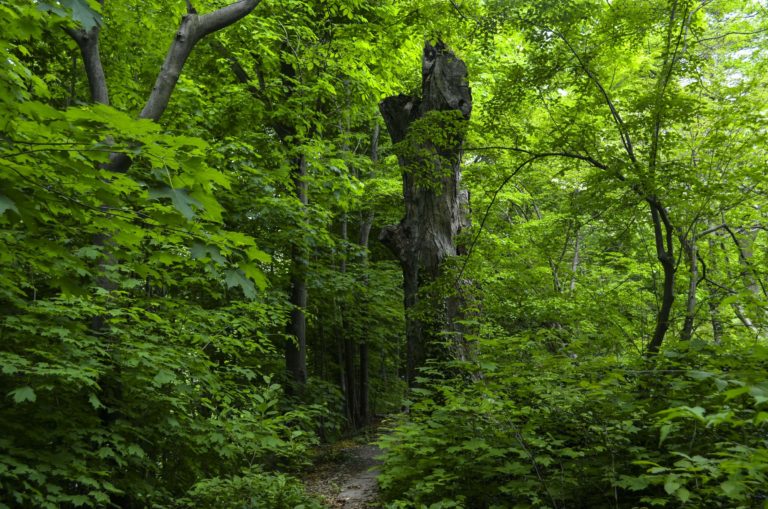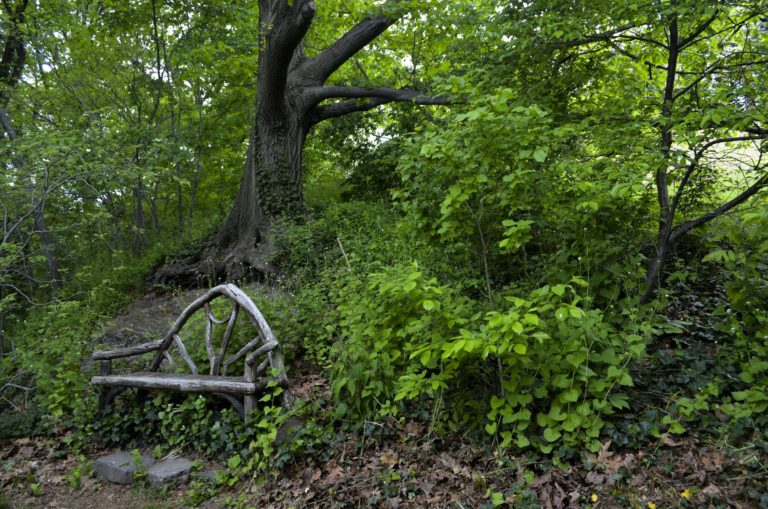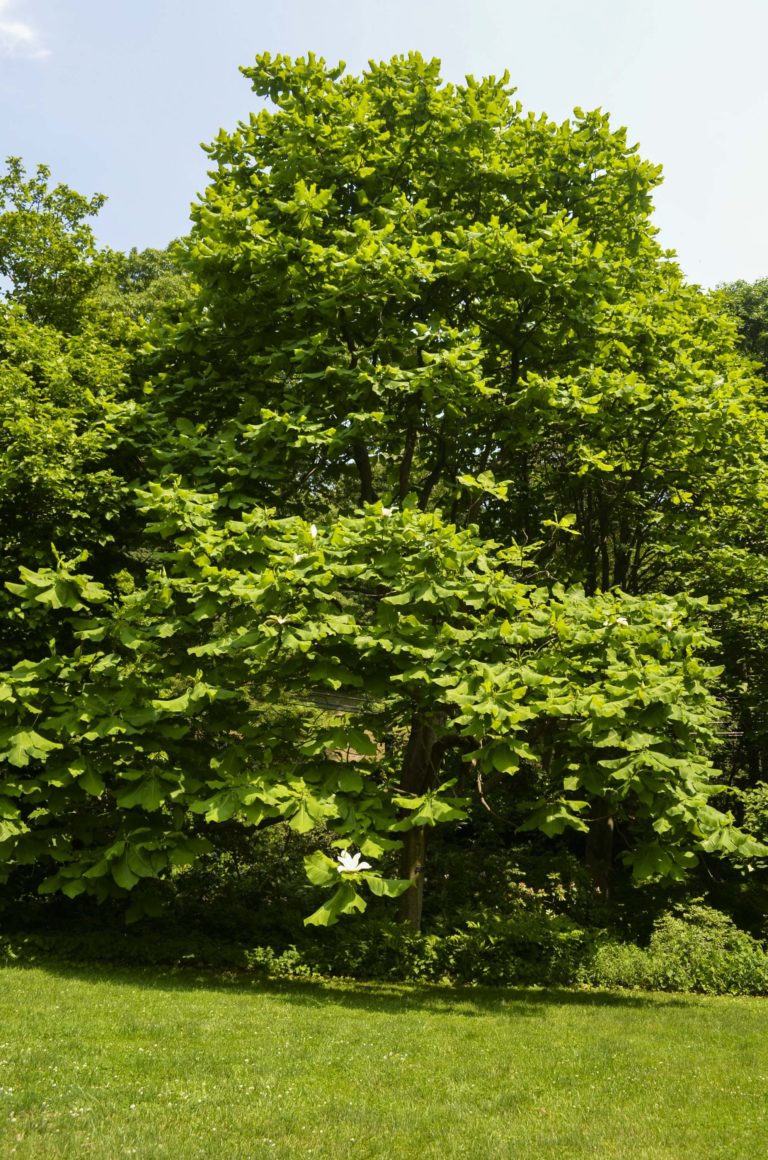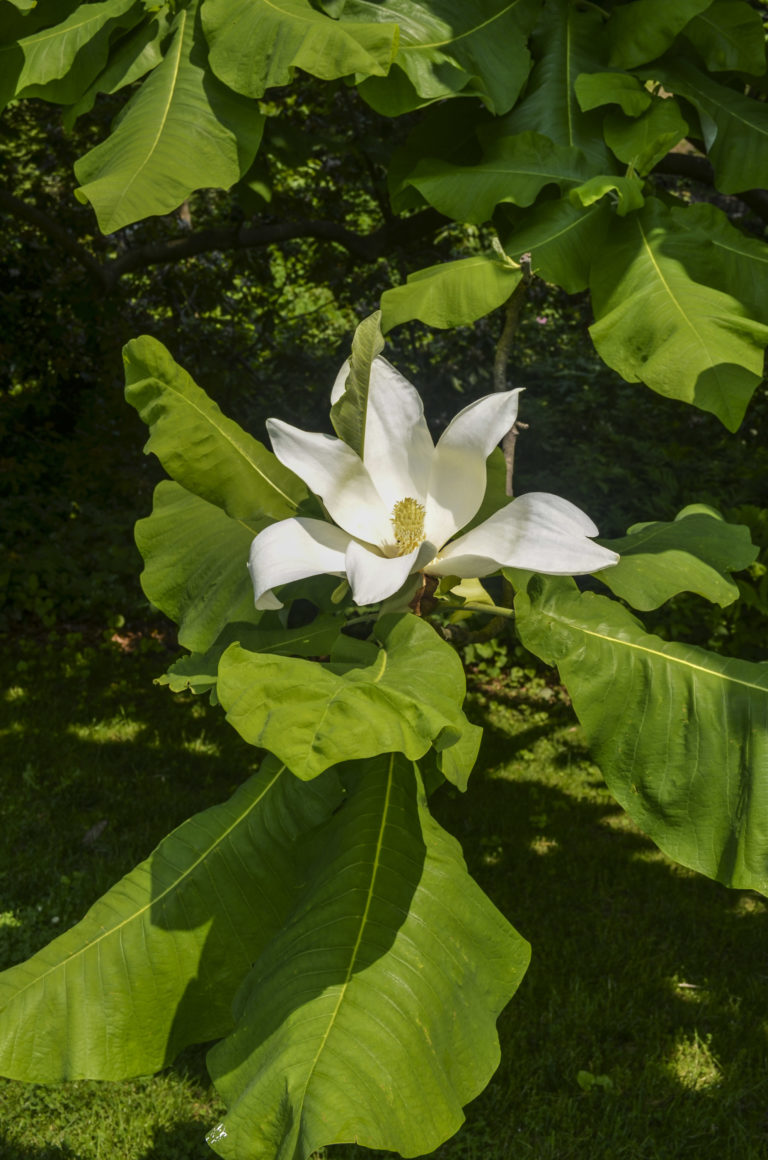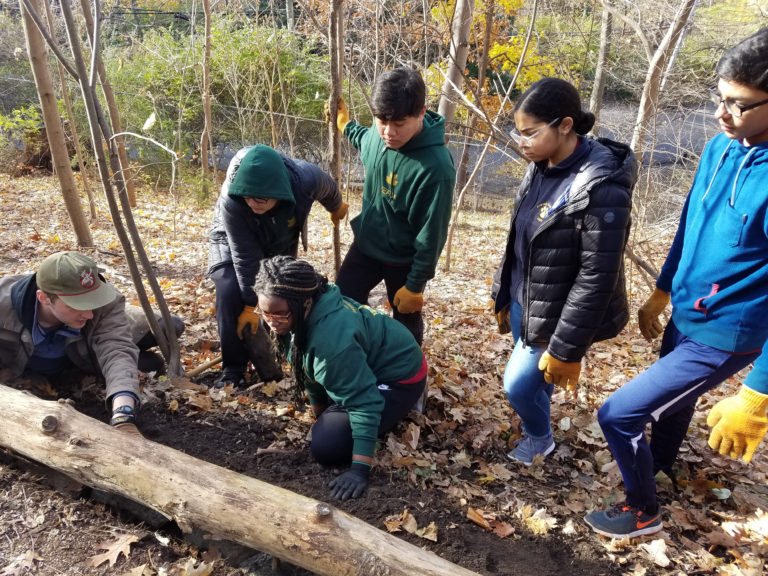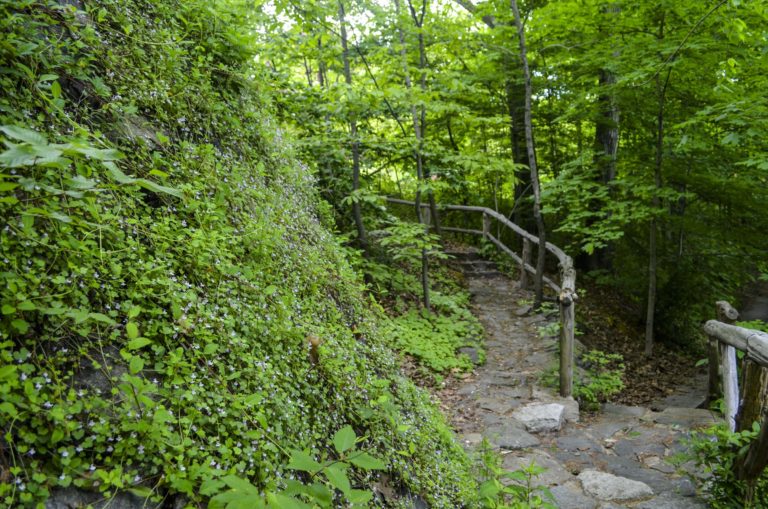
Herbert & Hyonja Abrons Woodland
A taste of wooded wilderness in the Bronx
A half-mile trail leads along the slopes of this shady, eight-acre stretch along the western flank of the property.
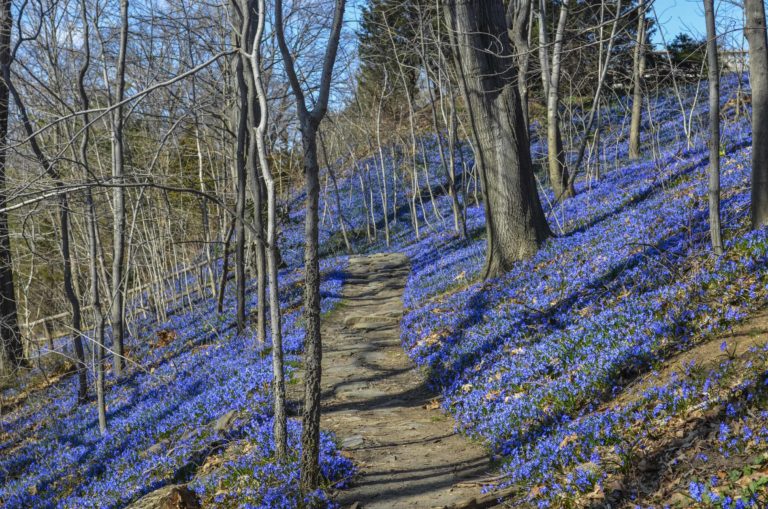
The first burst of color each spring is a river of blue "glory-of-the snow" (Chinodoxa sardensis) flowing down the slope. Demure wildflowers and ferns emerge in May.
Along the edge of the woodland below Glyndor Gallery is a bigleaf magnolia (Magnolia macrophylla). Planted almost a half-century ago, its leaves can reach almost three feet in length. A native of the southeastern U.S., it brings a subtropical feel to this part of the garden. In fall, look for its red, cone-shaped fruits; in May or early June, its enormous, white flowers perfume the air.
More on the Herbert & Hyonja Abrons Woodland
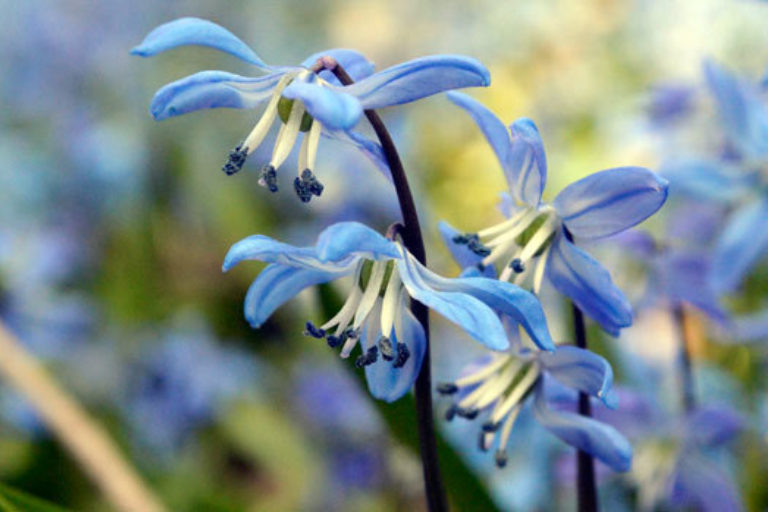
Siberian Squill
The blue carpets at Wave Hill in spring are usually attributed to the thousands of lesser glory-of-the-snow (Chionodoxa sardensis). The truth is a little more complicated.
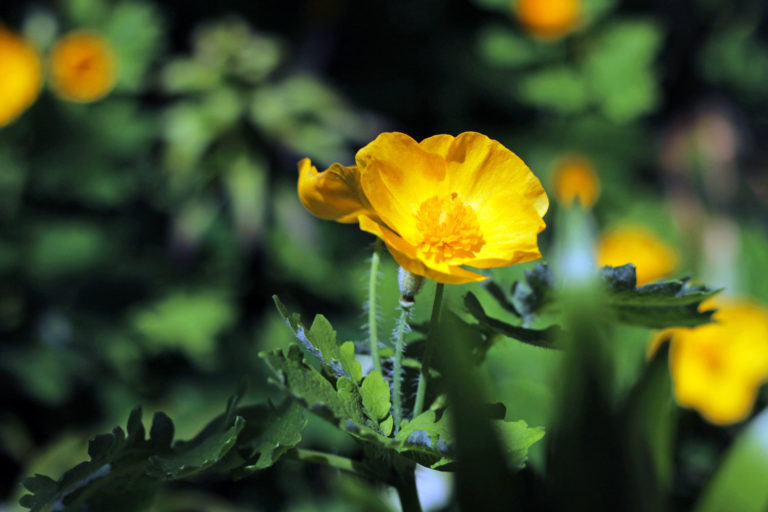
Celandine poppy
Native to much of eastern North America, the celandine poppy is a welcome, self-seeding perennial that can light up a shady corner of the garden in spring.
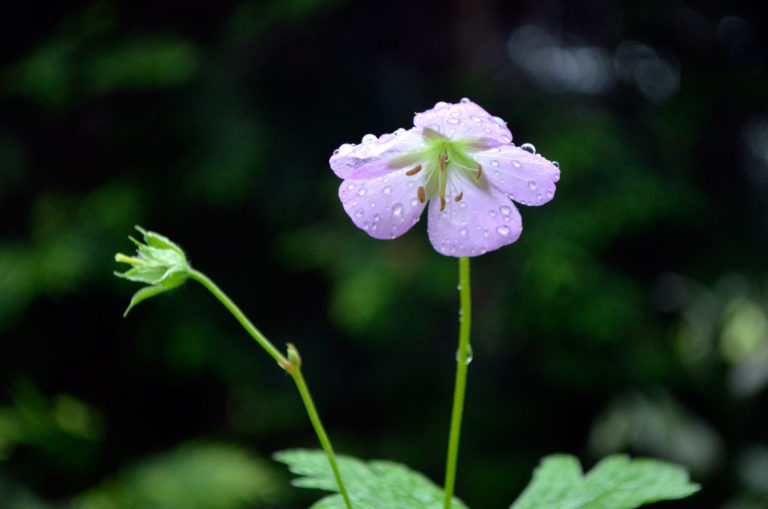
Wild Geranium
In the wild, this species is commonly found in wooded places across much of eastern North America, and might even turn up as a welcome volunteer in gardens.
